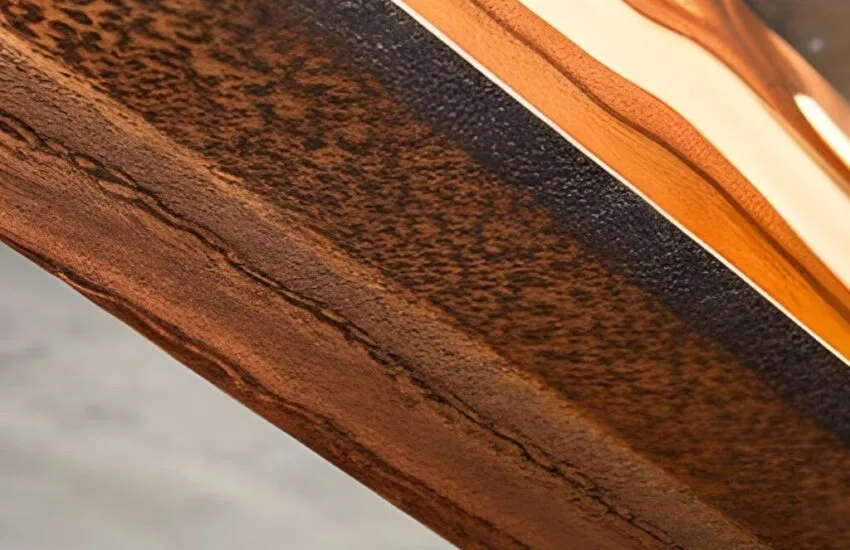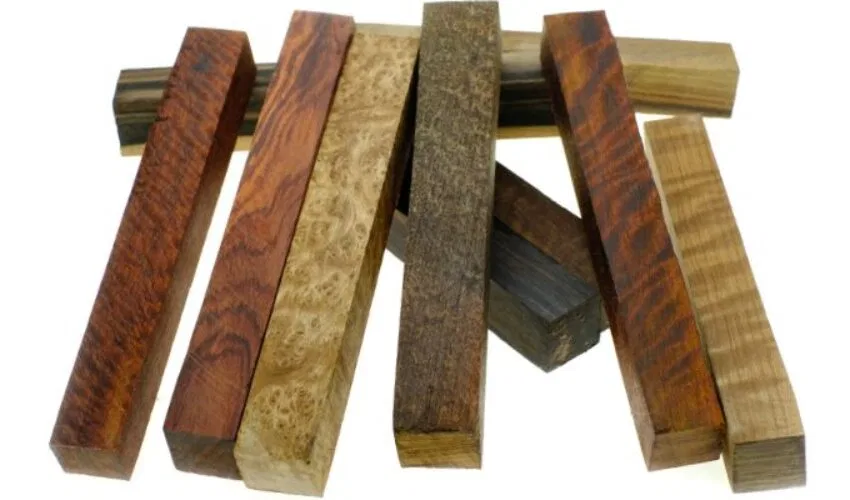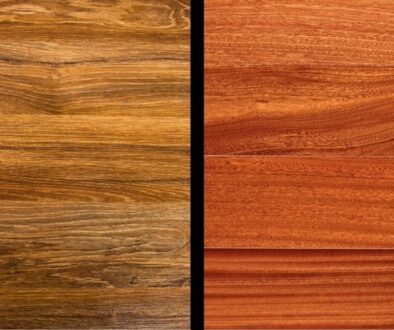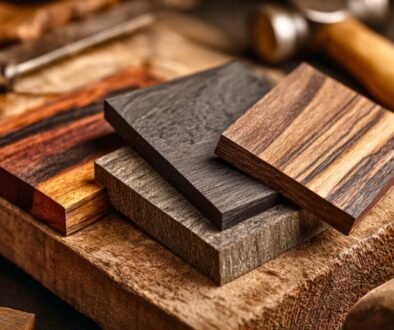Is Leopardwood Worth the Investment? – Uses, Pros & Cons

Published June 21, 2023
Today, we’re diving into the world of Leopardwood and see whether it’s worth the investment.
Known for its mesmerizing patterns and remarkable durability, Leopardwood has gained attention. Let’s find out what makes this exotic wood stand out.
What is Leopardwood?
Leopardwood, scientifically known as Roupala spp., is an exotic hardwood from South America. You can also find it in Central America, Chile, and Brazil.
It is famous for its striking appearance. It has an intricate pattern resembling the spots of a Leopard, hence its name. The unique visual appeal of Leopardwood adds a touch of elegance to any project.
What is Leopard Wood used for?
Leoparwood is used for furniture, cabinetry, veneer, turned objects, and musical instruments like guitars. Its durability makes it suitable for flooring, paneling, and other interior applications.
Leopardwood Pros
Aesthetic
When it comes to interior design, Leopardwood has an undeniable appeal. Its pattern contrasts its reddish-brown base color and the dark brown streaks. This captivating interplay of colors makes it a favorite among woodworkers and designers.
Durability
While its aesthetic appeal steals the spotlight, its durability should not be overlooked. This hardwood has excellent structural integrity, making it ideal for furniture. You can also use it for flooring, cabinetry, and musical instruments.
Its dense and tightly interlocked grain provides stability and resistance to warping. It ensures that your investment remains intact for years to come.
Natural Decay Resistance
Leopardwood’s natural resistance to decay and infestation adds to its durability. This aspect eliminates the need for chemical treatments and preservatives. Thus, making it environmentally friendly.
Versatility
One of the most significant advantages of Leopardwood is its versatility. Its moderate workability allows artisans to create intricate designs and details effortlessly.
From delicate carvings to sturdy construction, this timber accommodates various woodworking techniques. You can use Leopardwood in flooring, paneling, veneers, and turned objects. It will allow you to customize and enhance its natural beauty.
Leopardwood Cons
Cost
Since Leopardwood is an exotic wood, it is more expensive than common wood types. The price can make it less accessible for budget-conscious projects or individuals.
Difficult to work with
Leoparwood can be challenging to work with due to its hardness and density. It can be tough to cut, shape, or machine. It may also require specialized tools and techniques.
Allergies
Some people may be allergic to specific wood species, including Leopardwood. Individuals with known wood allergies should be careful when working with this wood.
Is Leoparwood worth the investment?
This exotic lumber’s price tag might be higher than more common options. But its unique visual appeal, durability, and versatility make it worth the investment.
The striking pattern of Leopardwood adds luxury and sophistication to any space. It will instantly transform into a conversation starter.
Moreover, its resilience ensures that your investment will last for generations.
What is the difference between Leopardwood and Lacewood?
The difference between Leopardwood and Lacewood is their distinct characteristics. Leopardwood has a prominent grain pattern resembling the coat of a leopard. Lacewood, on the other hand, has delicate lace-like patterns.
Leopardwood vs Lacewood
When it comes to unique woods, Leopardwood and Lacewood are often mentioned. Both offer distinctive grain patterns that catch the eye and elevate any project.
Leoparwood, as we’ve mentioned, is an exotic hardwood known for its leopard-like pattern. Beyond its aesthetic appeal, it also boasts exceptional durability. Its dense and tightly interlocked grain provides stability.
Lacewood is remarkable for its grain pattern. Unlike the spots of a leopard, Lacewood features intricate lace-like markings. They are visible on its quarter-sewn surface.
Regarding color, Lacewood exhibits a warm golden hue with reddish-brown streaks. This color adds a touch of warmth to projects, making it a popular choice among artisans.
Leopardwood vs Lacewood: Comparison
Leopardwood and Lacewood offer stunning visual appeal. But here are some key differences to consider.
Grain Patterns
Leopardwood’s grain pattern is bold and looks like leopard spots. Lacewood has delicate lace-like markings created by medullary rays.
Color
Leopardwood has a reddish-brown base color with dark streaks. Lacewood has a golden hue with reddish-brown streaks.
Durability
Both timbers offer excellent durability. Leopardwood’s tightly interlocked grain provides stability and warp resistance. Lacewood boasts a moderate density that lends it strength and durability.
Availability
Leopardwood is native to Central and South America. Lacewood is found primarily found in Tropical South America. Availability may vary depending on your location. It’s worth considering the sourcing and accessibility in your area.
Choosing the Right Timber for Your Project

When deciding between Leoparwood and Lacewood, it comes down to personal preference. If you’re drawn to bold patterns and a more dramatic visual impact, Leopard is an ideal choice. If you prefer intricate grain patterns with a warm golden hue, choose Lacewood.
Consider the overall design you aim for and its availability in your area. Consult with a woodworking expert or supplier to provide insights and guidance.
Whether you choose Leopardwood or Lacewood, you’ll add a unique piece to your project.
Conclusion
Leoparwood is worth the investment for woodworkers and artisans. Its unique pattern, durability, and versatility make it a great choice. Although it may be more expensive, its beauty and quality make it a valuable investment.
Hire The Timber Experts For Your Next Project
Vintage & Specialty Wood should be your source of the highest quality timbers from around the world. When it comes to fabricating and installing reclaimed wood or specialty wood products in your home, we don’t cut corners. We offer many reclaimed wood and specialty wood products such as Douglas Fir, white oak, and much more. We also offer timber framing and wood flooring services as well. Contact our team today to speak to a timber expert about what Vintage & Specialty Wood can do for you.

This Blog Is Fact Checked
This content has undergone meticulous fact-checking by our team of internal experts. Gain a deeper understanding of the high editorial standards we uphold on our website here.

About The Author
Experience, exploration, and knowledge are the hallmarks of writer Rei Bayucca. Her dedication to crafting articles that both inspire and educate will leave you thinking long after you’ve finished reading.




